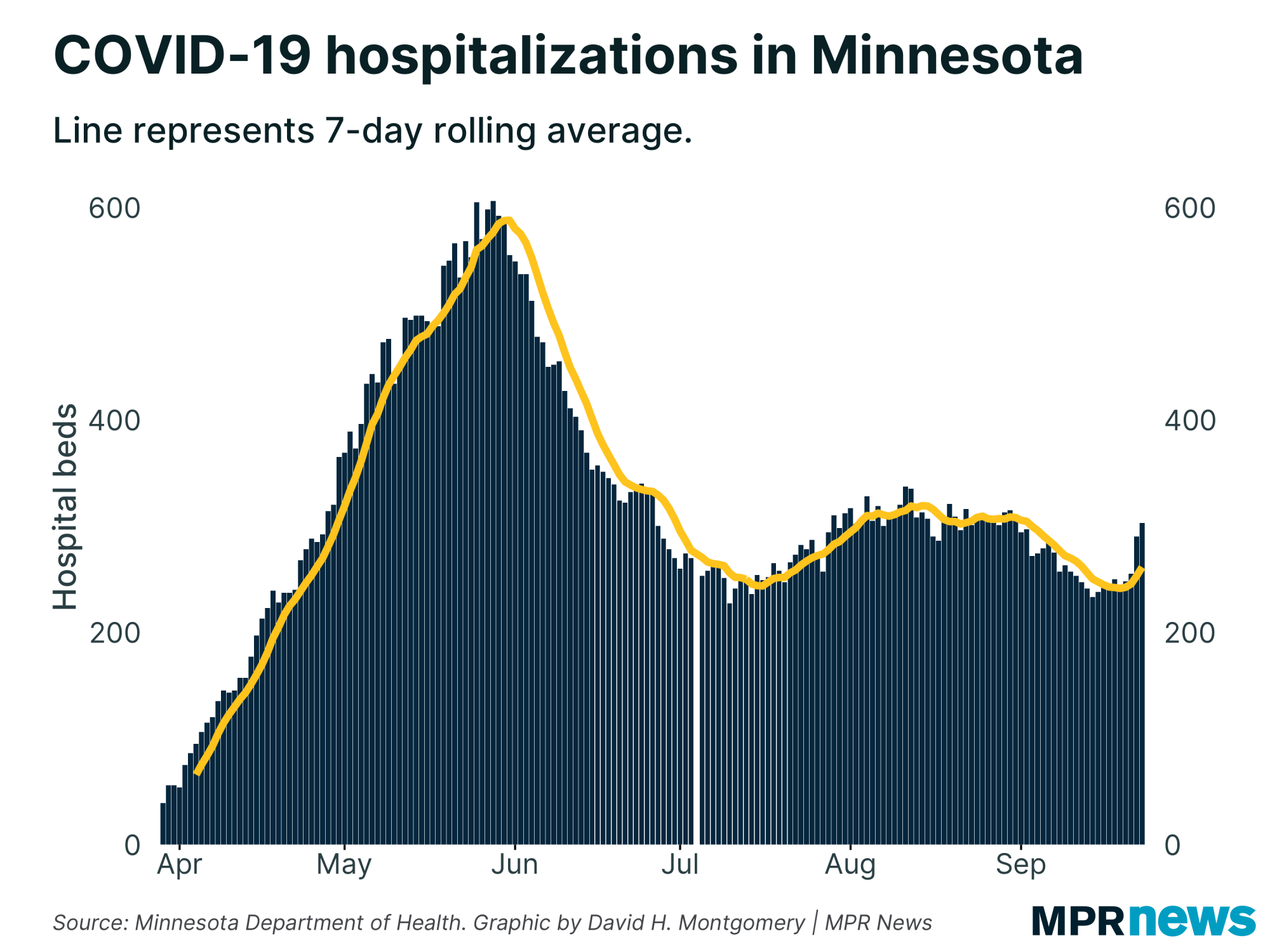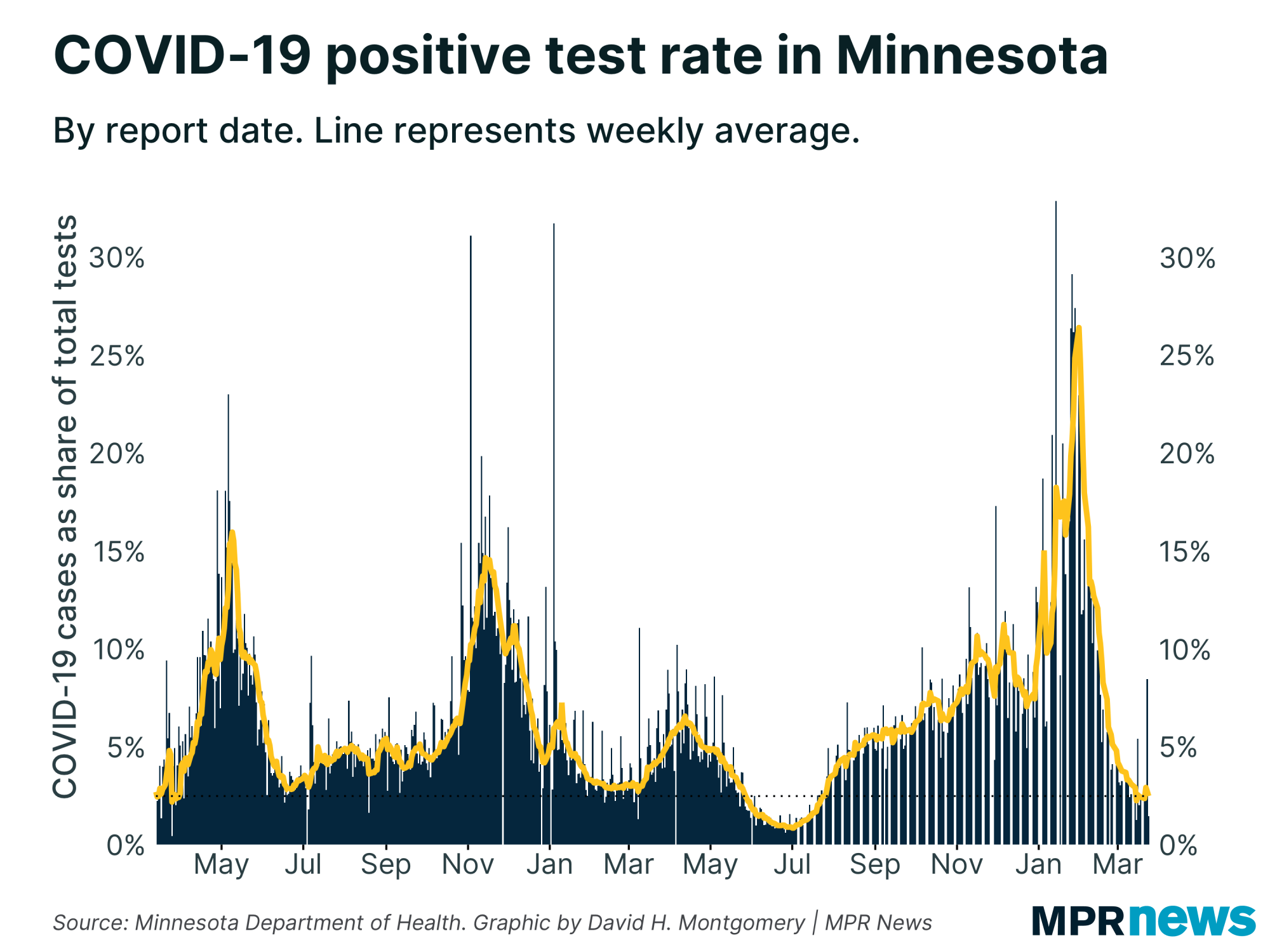Aug. 10 update on COVID-19 in MN: Worries rise over isolation in long-term care

Go Deeper.
Create an account or log in to save stories.
Like this?
Thanks for liking this story! We have added it to a list of your favorite stories.
Updated: 6:21 p.m.
The vast majority of Minnesota’s long-term care residents have not been diagnosed with COVID-19 — yet they’re still suffering because of it.
Months of restrictions on visitors to long-term care designed to safeguard some of the state’s most vulnerable populations have taken an emotional toll on families and seniors, officials said Monday as they unveiled new guidance that would open the door wider to more visitors.
Despite a recent, worrisome rise in the number of confirmed COVID-19 cases in long-term care operations, officials have become increasingly concerned over reports of despondent residents who in some cases are refusing to eat.
“Loneliness, depression, isolation and heartbreak are all safety issues,” Aisha Elmquist, the state’s deputy ombudsman for long-term care, told reporters Monday as she and other public health leaders answered questions around the latest COVID-19 data.
Turn Up Your Support
MPR News helps you turn down the noise and build shared understanding. Turn up your support for this public resource and keep trusted journalism accessible to all.
“Everyone needs others,” she added, “including those who live in long-term care settings.”
625 new cases; hospitalizations rise
New concerns over the emotional and mental health of long-term care residents surfaced on the same day the Health Department confirmed 625 more cases in Minnesota. Hospitalizations and intensive care counts climbed and three more people died.
The Monday numbers continued a pattern of rising new caseloads even as deaths remained in single-digits.
While current hospitalizations (320) and the number needing intensive care (159) remain far lower than their late-May peak, they’ve shown an upward swing the past few weeks, along with a stubborn persistence.

Those are two closely watched metrics as officials work to manage the spread of the disease so it doesn’t overwhelm the health care system. Monday’s count marked the 11th consecutive day with 300 or more people still hospitalized.

Monday’s numbers followed a weekend of record daily increases in COVID-19 cases.
Saturday’s update from the Minnesota Department of Health included 924 additional confirmed cases — the greatest daily total of the pandemic so far in the state. The agency reported another 806 cases in Sunday’s report.
Of the 61,516 confirmed cases since the pandemic began, about 88 percent of those diagnosed have recovered to the point they no longer need to be isolated.
Children, teens drive new cases
Worries continue about the growth of COVID-19 among younger Minnesotans, including that those infected will inadvertently spread the virus to grandparents and other more vulnerable people.
People in their 20s remain the age group with the highest number of COVID-19 confirmed cases in the pandemic — more than 14,000.
However, the last two days of data show Minnesotans younger than age 20 have become the age group with the most new confirmed COVID-19 cases, passing 20-somethings.

The median age of Minnesotans infected has been trending down in recent weeks and is now 36 years old.
Regionally, the Twin Cities and its suburbs have been driving the counts of newly reported cases. But the disease is present in all parts of the state, including the north, which had largely avoided the outbreak until recently.

Many of the state’s fastest-growing outbreaks relative to population are in northern Minnesota. Beltrami County, home to Bemidji, has seen a steady climb the past few weeks. The county reported 241 cases as of Monday.

Meatpacking operations had been hot spots for big outbreaks in southwest, west-central and central Minnesota earlier in the pandemic, but new cases have slowed considerably in recent weeks.
More visitors, though gains remain ‘fragile’
The Health Department Monday reported three more people had died, bringing the total to 1,660 since the pandemic began. Among those who’ve died, about 75 percent had been living in long-term care or assisted living facilities; nearly all had underlying health problems.
That death toll is one of the reasons long-term care has faced steep visitor restrictions.
In early May, the Walz administration unveiled a “battle plan” to safeguard Minnesotans living in long-term care facilities, including expanded testing, more personal protective gear for health workers and a promise to maintain “adequate” staffing when workers fall ill.
It helped drive daily death counts down to mostly single digits. Now, though, officials worry those gains may slip away as COVID-19 ripples across the state.

They said they’re seeing new cases tied to long-term care facilities that they believe are being driven largely by community spread and brought in inadvertently by facility staff as restrictions on daily life loosen and people return to indoor gathering spaces and attend family events.
“The staff are clearly having more exposures in the community than in the facilities themselves,” Dr. Ruth Lynfield, the state’s epidemiologist, said Friday.
She urged people to stay vigilant against the spread of the disease — wearing masks in indoor gathering places, social distancing and washing hands — and warned that the work to limit spread among vulnerable populations was at risk.
“This is fragile and we are very concerned that the progress we have made can be at risk, and can even be lost, if we let up on our precautions,” she said. “We need everyone in Minnesota to be doing their part to limit transmission. We are all connected to each other.”

The big-picture situation in long-term care is “quite positive,” Malcolm said Monday, noting that 90 percent of assisted living facilities in Minnesota and 71 percent of skilled nursing homes have had no cases of COVID-19 in the past 28 days.
“We’re trying to create a path, guidance, some visibility into what would be the right process” to open doors to more visitors, she said. “But a lot of it is very situation-dependent.”
Still, officials were clearly moved to act by some of the harrowing stories they’ve heard of seniors despondent in isolation.
“We simply cant keep loved ones in isolation with no end in site,” said Lindsey Krueger, director of the Health Department’s office of health facility complaints.
The department briefing with reporters on Monday also included remarks from a Twin Cities area woman who said her mother, who’s in long-term care, compared her isolation to prison and had declined window and outdoor visits.
The woman said she wrote the facility and finally got to hug her mother four months after the pandemic lockdown began. She told reporters her mother had lost weight and seemed to be having a difficult time, but after visits seemed to be doing better.
Developments from around the state
St. Peter pool closed after staff member tests positive for COVID-19
A southern Minnesota city cut its pool season short after one of its employees tested positive for COVID-19 over the weekend.
St. Peter, Minn., city officials posted on its Facebook page that one of their pool employees tested positive for COVID-19. The Roy T. Lindenberg Memorial Pool immediately ended its season.
The city said exposure risk was low because of the safety measures that were in place to reduce spreading the virus.
The public outdoor pool opened for the season just a little over a month ago.
— Hannah Yang | MPR News
Grand Portage reports first confirmed case
Officials with the Grand Portage Band of Lake Superior Chippewa said Saturday that they've confirmed the first case of COVID-19 on the reservation in far northeastern Minnesota.
They said the patient, a man in his 30s, lives on the reservation.
"The patient remains in quarantine, complied with mandatory contact tracing protocols and has been interviewed by health officials," band officials said in an online post. "Currently, our concern is for the health of this patient and the continued safety and health of the community."
Cook County — which includes the reservation — has just five confirmed cases as of Sunday, though officials have long said the actual number of cases across the state is higher than what's confirmed.
The news from Grand Portage follows an announcement from the Fond du Lac Band last Wednesday that it had confirmed the first two COVID-19 cases on its reservation near Cloquet.
— Andrew Krueger | MPR News
School guidance shifting with case counts
State health officials last week said they’d use county-level COVID-19 data as the starting point to help school districts decide whether to bring kids back into their buildings this fall. Newly updated data, though, is already altering the landscape.
Fresh numbers released Thursday by the Minnesota Department of Health have changed the guidance for school reopening in 27 counties — if the school year started today.

Rising COVID-19 caseloads mean schools in seven counties are recommended to use more distance learning than the original recommendations issued last week.
For example, Sherburne County last week reported 15.8 cases per 10,000 residents over a 14-day period, which meant the state recommended its schools have in-person education for grade schoolers and a mix of in-person and distance learning for secondary students.
An extra week of rising cases, however, brought Sherburne up to 23.3 cases per 10,000 residents over 14 days — which brings a recommendation of hybrid learning for all students.
The other six counties to see their reopening recommendations downgraded were Faribault, Martin, Norman, Red Lake and Rock counties.
In 20 counties, falling case counts mean a change in recommendation for the better in terms of bringing kids back to buildings.
Carver County, for example, fell from 20.8 cases per 10,000 residents over 14 days last week to 17.9 this week, moving it from hybrid learning for all students to in-person learning for elementary school.
These metrics, based on COVID-19 cases, form the starting point as districts and the Health Department negotiate specific learning models for each district.
The case figures fueling these recommendations are somewhat out of date, because of how the agency is calculating its numbers.
The recommendations releases Thursday are based on case data from between July 12 and July 25, while next week will see updated data based on cases from July 19 to Aug. 1.
— David H. Montgomery | MPR News
Top headlines
Minnesota health officials discuss COVID-19 transmission in the state: Health Commissioner Jan Malcolm and the state’s infectious disease director, Kris Ehresmann, return to the show to discuss the latest on the COVID-19 pandemic and answer listener questions.
National lockdown could be the economy's best hope, says Minneapolis Fed president: Neel Kashkari, president of the Federal Reserve Bank of Minneapolis, is calling for a six-week lockdown to save lives and the economy.
COVID-19 in Minnesota
Data in these graphs are based off Minnesota Department of Health cumulative totals released at 11 a.m. daily. You can find more detailed statistics on COVID-19 at the Health Department website.
The coronavirus is transmitted through respiratory droplets, coughs and sneezes, similar to the way the flu can spread.



